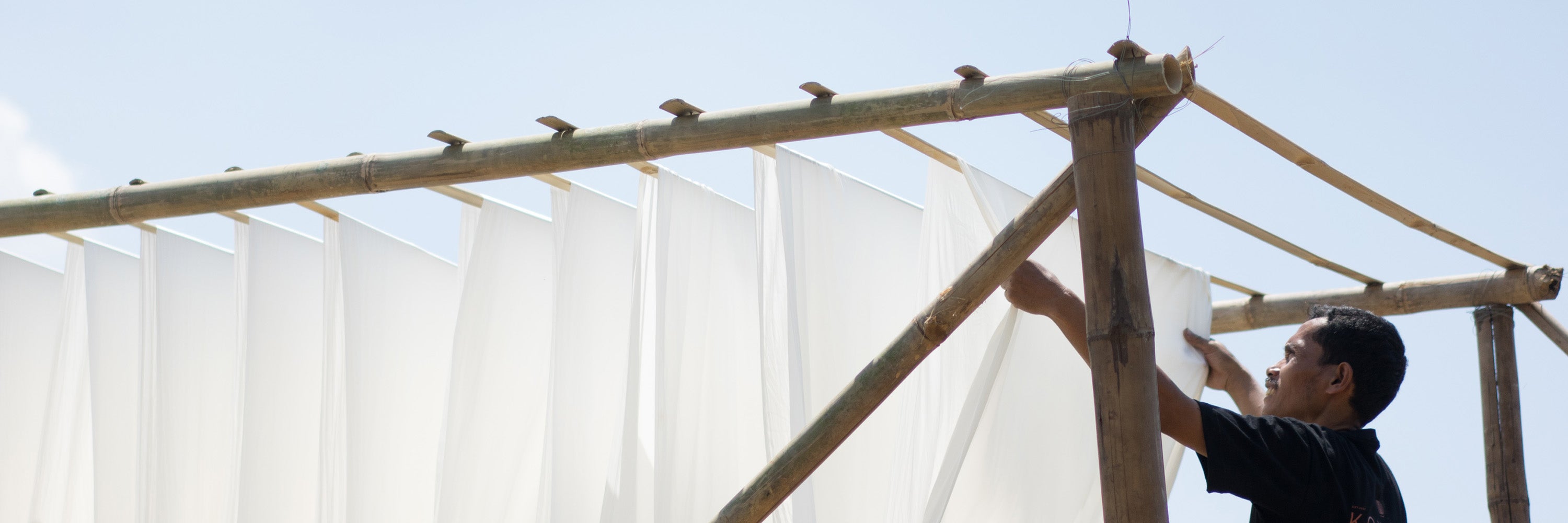Batik Wayang: Where Timeless Craft Meets Conscious Elegance
Our Satin woven Scarves, adorned with hand-applied batik motifs, are artworks in motion—each piece a tribute to culture, sustainability, and timeless elegance.
The satin weave gives it its signature silky shine, while the viscose fibers create a cool, airy texture and absorb dye beautifully. This makes it perfect for vibrant prints, intricate details, and timeless designs.
Stories of the South East, printed by hand, worn with grace

The Handcrafted Process: Wooden Silk Screen Batik
Our scarves are created through a traditional, hands-on method using carved wooden silk screen frames, known locally as cap sablon. Though different from hand-drawn (batik tulis), this process is equally artisanal, demanding skill, timing, and human intuition.
Step 1: Preparing the Fabric
We begin with gently soaking the Satin viscose, a luxurious textile that combines the natural softness of plant-based viscose with the elegant sheen of a satin weave. The result is a fabric that flows like pure silk, glows with a refined luster, and feels exceptionally smooth against the skin.
Made from sustainably harvested wood fibers—such as bamboo, eucalyptus, or beech—satin viscose is a vegan-friendly, breathable, and lightweight alternative to silk. It’s ideal for scarves that are meant to drape gracefully and offer comfort, even for sensitive skin.
Step 2: Hand-Pressed Application
The batik design is applied by hand using wooden frames, carefully applied with natural AZO-free dyes. Each pass requires steady hands, repetition, and care—producing subtle variations that give every scarf its one-of-a-kind experience.
Step 3: Setting, Washing & Finishing
After drying and setting, the fabric is gently washed to fix the color and remove any residual materials. The scarf is then air-dried and finished, ready to be worn as a piece of personal Indonesian heritage.
